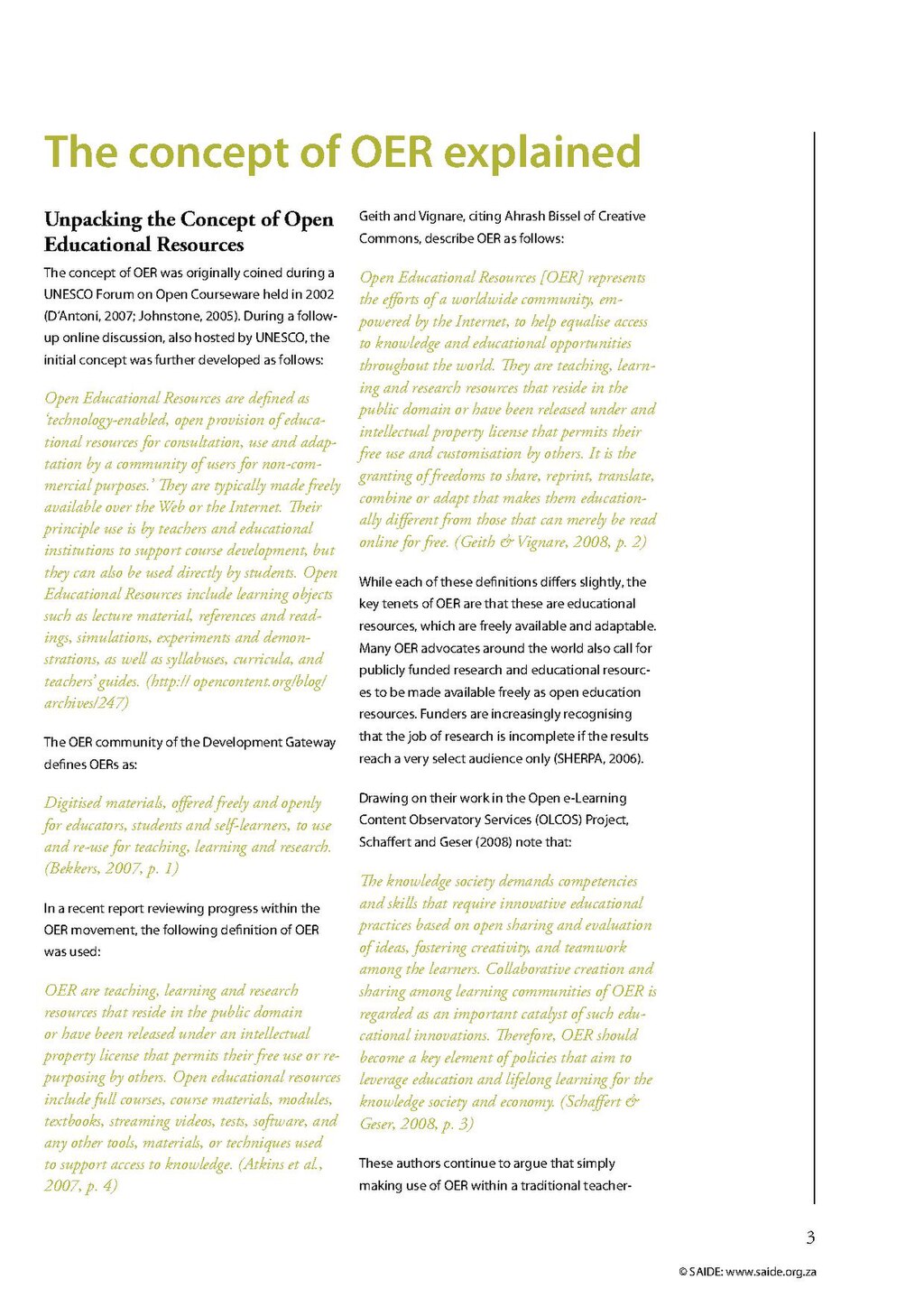The concept of OER explained
Unpacking the Concept of Open Educational Resources
The concept of OER was originally coined during a UNESCO Forum on Open Courseware held in 2002 (D'Antoni, 2007; Johnstone, 2005). During a followup online discussion, also hosted by UNESCO, the initial concept was further developed as follows:
Open Educational Resources are defined as technology—enabled open provision of educational resources for consultation, use and adaptation by a community of users for non—commercial purposes. They are typically made freely available over the Web or the Internet. Their principle use is by teachers and educational institutions to support course development, but they can also be used directly by students. Open Educational Resources include learning objects sucb as lecture material, references and readings, simulations, experiments and demonstrations, as well as syllabuses, curricula, and teachers' guides. ( http://opencontent.org/blog/archives/247 )
The OER community of the Development Gateway defines OERs as:
Digitised materials, offered freely and openly for educators, students and self—learners, to use and re—use for teacbing, learning and research. (Bekkers, 2007, p. 1)
In a recent report reviewing progress within the OER movement, the following definition of OER was used:
OER are teaching, learning and research resources that reside in the public domain or have been released under an intellectual property license that permits their free use or repurposing by others. Open educational resources include full courses, course materials, modules, textbooks, streaming videos, tests, software, and any other tools, materials, or techniques used to support access to lenowledge. (Atkins et al., 2007, p. 4)
Geith and Vignare, citing Ahrash Bissel of Creative Commons, describe OER as follows:
Open Educational Resources [OER] represents the efforts of a worldwide community, empowered by the Internet, to belp equalise access to lenowledge and educational opportunities throughout the world they are teacbing, learning and researcb resources tbat reside in the public domain or bave been released under and intellectual property license tbat permits tbeir free use and customisation by otbers. It is the granting of freedoms to sbare, reprint, translate, combine or adapt tbat ma/ees tbem educationally different from those tbat can merely be read online for free. (Geitb é" Vignare, 2008, p. 2)' While each of these definitions differs slightly, the key tenets of OER are that these are educational resources, which are freely available and adaptable. Many OER advocates around the world also call for publicly funded research and educational resources to be made available freely as open education resources. Funders are increasingly recognising that thejob of research is incomplete if the results reach a very select audience only (SHERPA, 2006).
Drawing on their work in the Open e—Learning Content Observatory Services (OLCOS) Project, Schaffert and Geser (2008) note that:
The knowledge society demands competencies and s/eills tbat require innovative educational practices based on open sbaring and evaluation of ideas, fostering creativity, and teamwor/e among the learners. Collaborative creation and sbaring among learning communities of OER is regarded as an important catalyst of sucb educational innovations. 770erefore, OER sbould become a leey element of policies tbat aim to leverage education and lifelong learning for the knowledge society and economy (Scbajj'ert é" Geser, 2008, p. 3)
These authors continue to argue that simply making use of OER within a traditional teacher
3
© SAIDE: www.saide.org.za